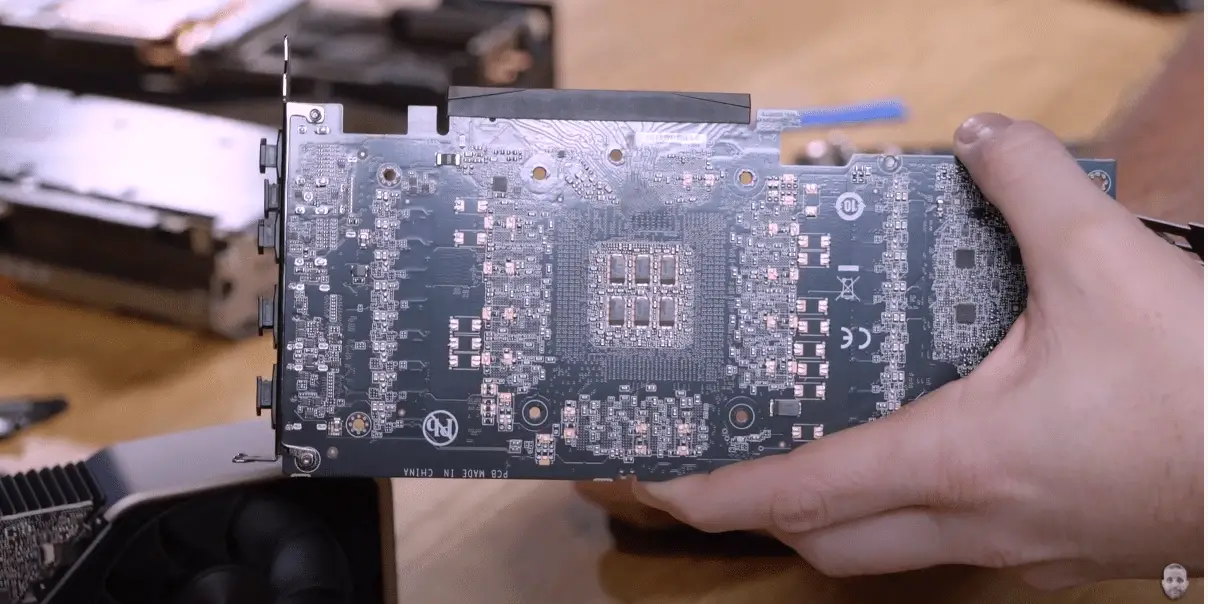Fresh high-performance graphics cards are a product category that many nerds care about, a description that is as cut and dried for Nvidia’s new “Ampere” -based cards in the Geforce RTX 3000 series. In recent weeks, the absolute flagship RTX 3090 and significantly cheaper RTX 3080 have rolled out to both consumers and test labs, which can state a real performance life over its predecessor “Turing”.
►Nvidia Geforce RTX 3080 “Ampere” – an unusually large performance life
However, not everything is gold and green forests with the newcomers, where criticism of accessibility has been hailed. SweClockers has spoken to several Swedish retailers, who testify to immediately emptied storage shelves and very meager supply. The users who nevertheless managed to get their hands on cards are not entirely satisfied, and via the forum Reddit, for example, some report unpredictable crashes.
Now a new report says that it is not about individual Monday copies or trouble with drivers, but about incompatibility between the highest level of performance and component selection from some manufacturers and special models. It is Igor Wallossek from the site Igor’s Lab who has identified a pattern between problem-affected users and the structure of their graphics cards.
Increased boost frequencies and selectability around capacitors
The first important detail to know is the different levels of clock frequencies that apply in the graphics card turn, where bass and turbo modes are the ones guaranteed. Manufacturers can also implement an additional boost level depending on the capability of the circuit. If the card stays below certain limits for power consumption and temperature, the clock frequencies may strive towards the higher level, where for example Nvidia’s Geforce RTX 3080 FE peaks at 1,900 MHz in SweClocker’s test – more than 100 MHz over turbo.
Information about the reference design. Image source: Igor’s Lab
The second detail is Nvidia’s reference design for the fresh graphics cards, where Wallossek makes an impact on the capacitors found on the back of the graphics circuit’s BGA socket. Here, manufacturers have some freedom of choice regarding component selection, where a set of five larger so-called SP capacitors can deliver stable current supply and keep electrical noise in check. The quintet must also be paired with a set of MLCC variants, the properties of which can be advantageous to enable fast discharges of current when the graphics circuit is loaded.
The alternative is to replace several SP capacitors with a cluster of MLCC variants, where then ten of these are used instead of one of the SP type. This is where Igor Wallossek found a pattern with the crashing cards, which fully invests in using exclusively SP capacitors. When the frequencies are pushed past the specified turbo level, due to play in current and temperature, these problems can thus occur.
Because not all user scenarios allow the extra high boost levels, not all users with said set of capacitors experience trouble. An underlying reason why the problems are only now visible, and were not captured already during the development phase, is attributed to a lack of drivers. The manufacturers have thus not had any major opportunities to test drive the cards before launch.
It is worth clarifying that the problem is exclusive to certain cards in the broad flora of partner models. Nvidia does not use its own reference specification for the Founders Edition cards, which have two clusters of MLCC capacitors in both Geforce RTX 3080 and RTX 3090. There are also several partner manufacturers that run on the same track or take the whole step further, where recently tested The Asus RTX 3080 TUF Gaming OC runs the MLCC capacitors across the board.
Exactly which cards have potential problems will become clear over time, but at the time of writing there are tables in various Reddit threads. Among the cards that run on six SP capacitors are Gigabyte’s Gaming OC and Colorful Igame Advanced OC, which the Youtube profile Jayztwocents dismantles in a video on the subject. He predicts that manufacturers will probably not recall such cards or reschedule production, but that BIOS updates will instead roll out and lower the ceiling for frequency peaks.
It should also be added that the connection between capacitor type and problem does not necessarily reveal the whole truth, and between the manufacturers ‘models there are, for example, differences in the capacitors’ capacitance. Other power supplies and the graphics circuits’ ability to reach high frequencies can also play a role. This is expressed by Jayztwocents in a short follow-up videos posted on Twitter.
So far, Nvidia has not made any official statements about the situation, but from a partner point of view, EVGA has said that it has made changes to the capacitor set on its Geforce RTX 3080 FTW3 before rolling out to consumers. It remains to be seen whether more partner manufacturers will choose to make changes to their cards in future revisions.
Have you succeeded with the piece of art to get home and test drive a Geforce RTX 3080 or RTX 3090? If so, have you experienced any issues with it? Tell us in the comments thread!















